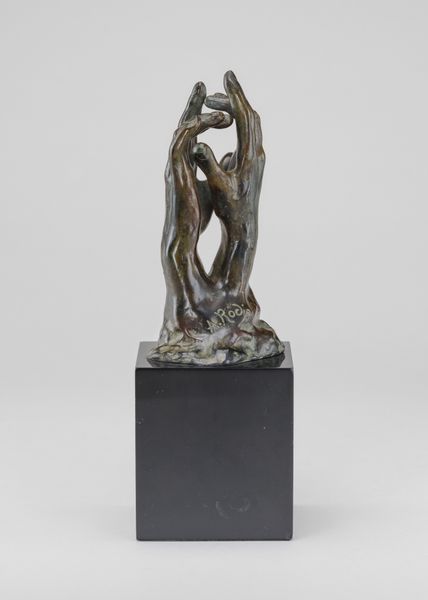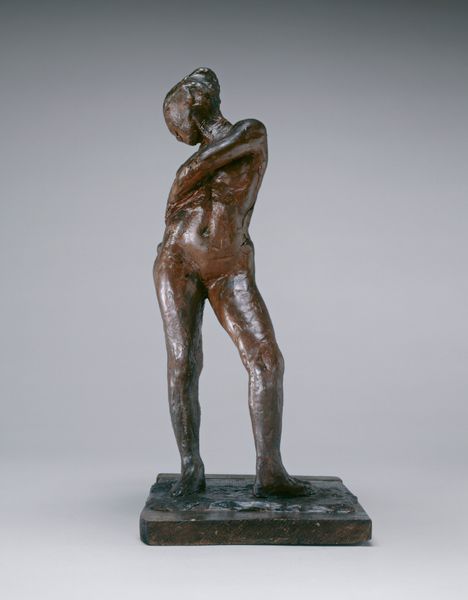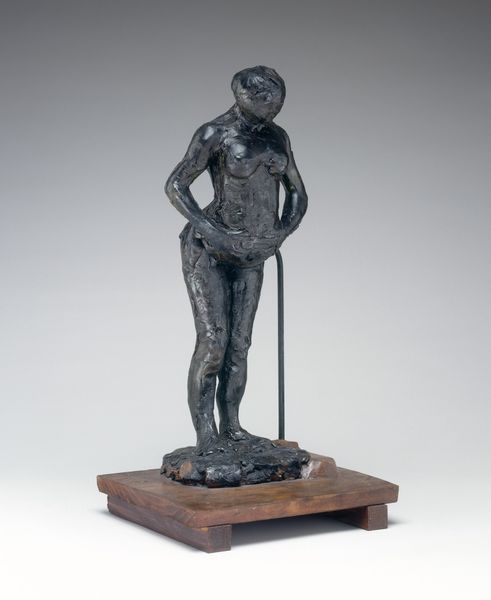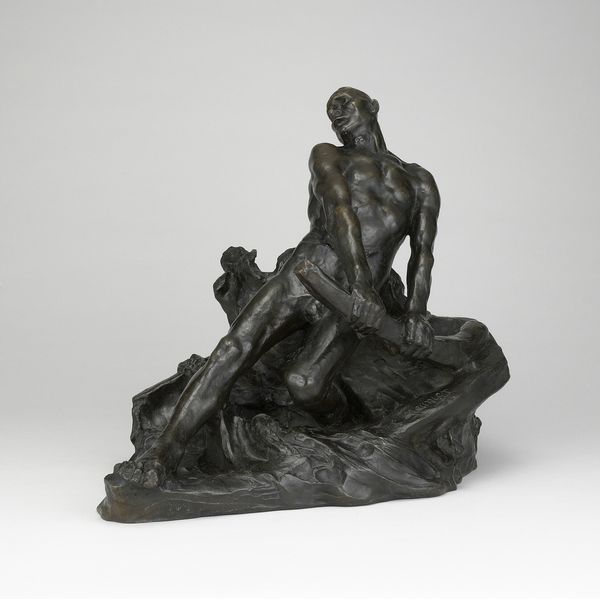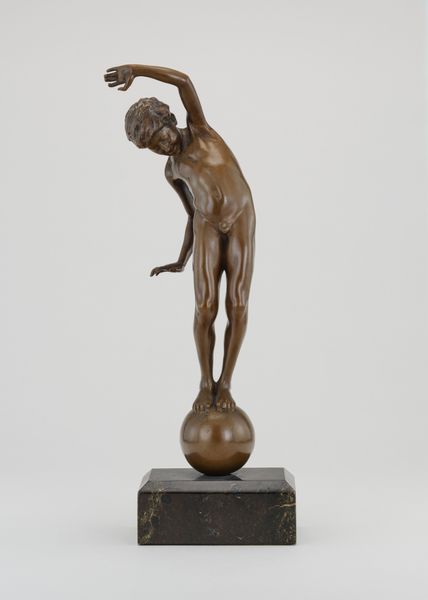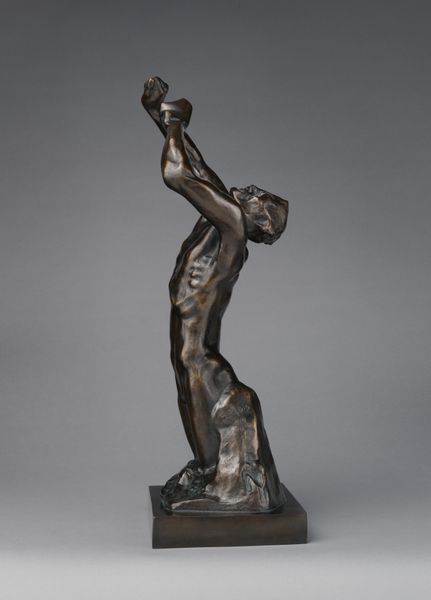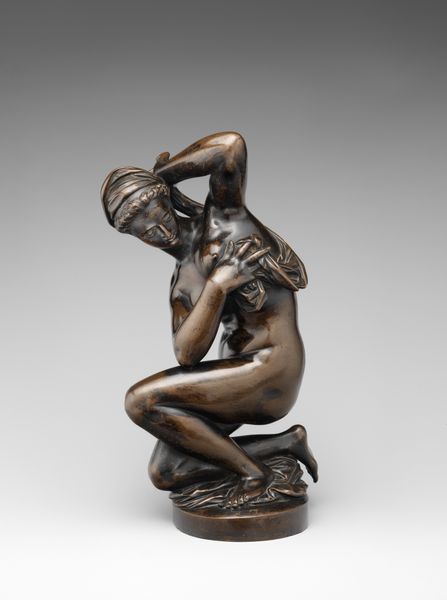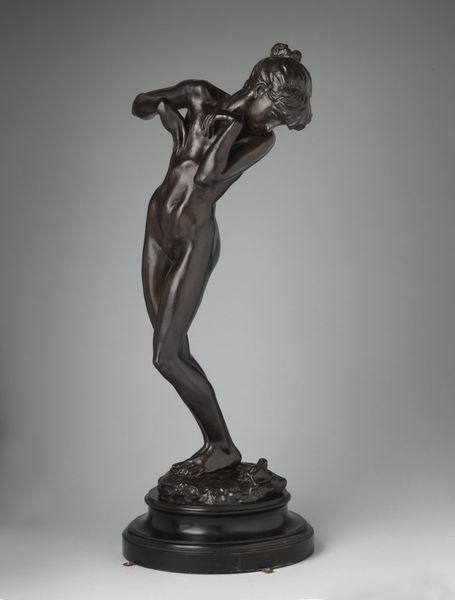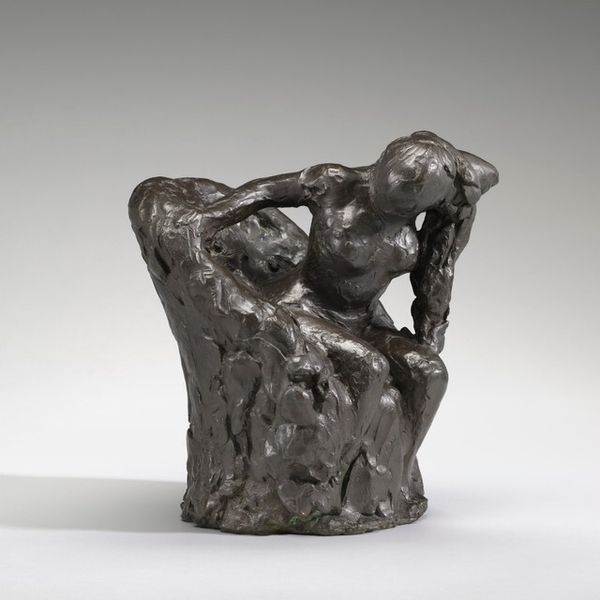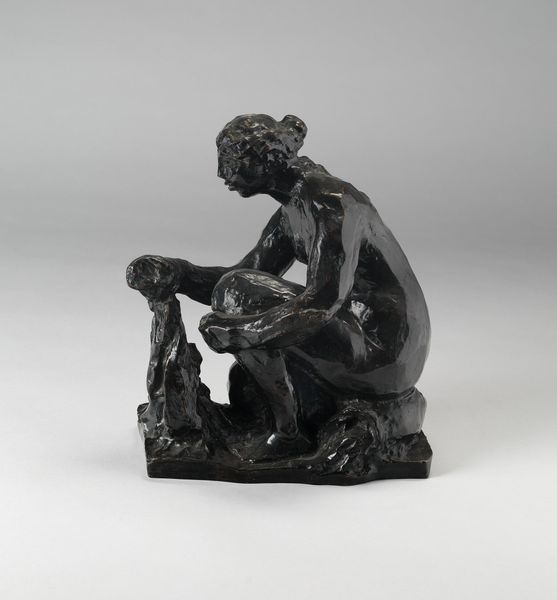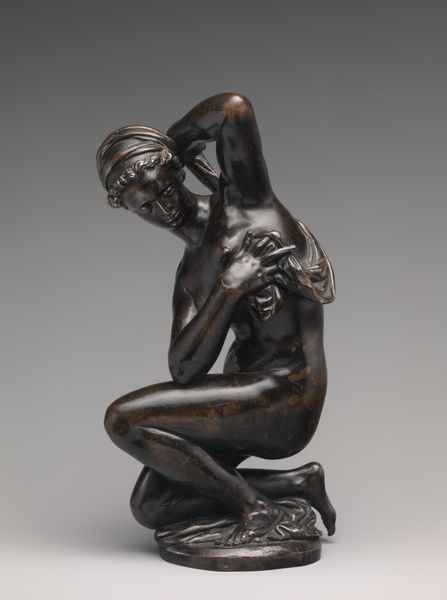
sculpture, wood
#
sculpture
#
mannerism
#
female-nude
#
sculpture
#
wood
#
decorative-art
Dimensions: Overall (confirmed, on socle): 5 3/4 × 1 7/8 × 1 7/8 in. (14.6 × 4.8 × 4.8 cm)
Copyright: Public Domain
Curator: My first impression is a visceral one. There's an intensity to this Giambologna sculpture—a roughness that conveys immediate emotional presence, wouldn't you agree? Editor: The Mannerist aesthetic is in full evidence. Consider the deliberate contrapposto, the spiraling pose. It’s all about refined artifice. Curator: It's "Seated Woman Representing Astrology," carved between 1570 and 1580. Look closer, and you’ll notice her posture is almost precarious, resting her weight in a complicated composition. This instability reminds us that divination itself is uncertain. Editor: Note how the wood grain itself enhances the three-dimensionality. Giambologna used its innate characteristics to create shadow and texture, augmenting the drama of the composition. Curator: Precisely. Even her nudity evokes specific meanings. Nakedness signifies truth in Renaissance symbolism. But this piece is not only about unveiling universal truths; it hints at the vulnerabilities inherent in seeking them. The missing head, the broken limbs speak volumes. Editor: The way the light plays across her body creates an exquisite tension. Observe how his carving transforms wood, a heavy material, into the supple curve of a torso. Giambologna manipulates our perception. Curator: This is what makes the figure compelling—she exists as a locus of cosmic knowledge but is physically imperfect, signifying human frailty against vast knowledge. This era was, after all, gripped by the search for knowledge amidst shifting paradigms. Editor: This tension underscores a core aspect of Mannerism. Perfection wasn’t the objective, rather exploring extremes and imbalances, that push beyond classical ideals. It asks more of us as viewers. Curator: That is the beauty and enduring mystery. In revealing this woman’s story, what does she ultimately reveal to us about ourselves? Editor: It is as if through form itself we can glimpse the human condition and it’s relationship to form. A beautifully orchestrated visual puzzle, isn't it?
Comments
No comments
Be the first to comment and join the conversation on the ultimate creative platform.
